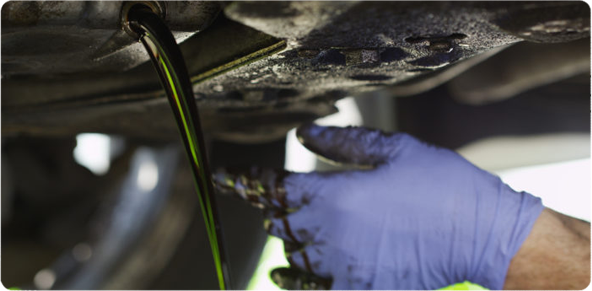One of the main issues among car owners is nailing the correct timing to change their vehicle oil. While lubricants are essential elements in the automotive process of running a car, knowing when to flush the old oil and replace it with the new is far more important.
It takes a considerable toll on any car if its oil isn’t promptly changed. The lasting effects may range from fried pistons to a chimney of exhausts, emitting nothing but toxic Carbon Monoxide. It can have negative effects on the vehicle’s overall performance, as the oil embarks on a journey that begins with the oil container cap, leading to the slot just before the engine by the connecting lines. From which, oil is sucked into the engine to lubricate the heating interacting between the fiery spark plugs and rotating pistons, and returns as folding in retreat to its container, but this time, the oil is slightly burned by the cycle. Of course, the hero of the topic at this point is the engine oil, as it takes this journey each time the engine opts for an internal combustion cycle.
There are different types of oil allocated to specific parts within any car, there is gearbox oil, which is more tolerant than its engine comrade, there is the brakes oil, working to ensure smooth transition every time a driver presses the braking pedal, and there is the hydraulics oil, which directs mainly to the steering wheel and its concording system at the wheelbase.
Be that as it may, all types of mechanical oil have a limited usability duration that afterwards, it starts to deem unfit. There are indicators that mechanics use to learn how long an oil can withstand before going well, bad! Engine oil for example has two different numbers to indicate both viscidity (stickiness) at different temperatures and reaction to heat (e.g. Castrol 10W40), while gearbox oil and the other types have their own set of indicators.
But why change? The general notion states that if something is working, why change it? Well, in the case of a car, overdue oil change causes metal particles to gather and cause blockages (similar to arteries), in the worst-case scenario, it would lead to a total stiffness at the engine head (or another respective car part) which might force the owner to replace either the pistons or the engine completely.
Now the question that begs itself is, when should car owners change their respective parts’ oil? One thing for certain is that each form of oil differs from the other, and therefore has a different range of functionality. To explore that range, it would help to look at this image from Car Buyers Lab:

That image shows from left to right the colors at which an oil change is due. A safe approach would be to change it 4, although there are always those who prefer to be proactive and thoroughly pamper their cars by going to the shop as soon as the oil hits the third color stage.
For those who don’t wish to get their hands sticky by removing the viscometer (the long thin prop by the engine with a holder on top), there’s also the possibility of relying on the odometer to count for the oil’s tolerance. The old theory stipulates that an oil change is due every 3000 miles (4,828 kilometres), recently, car manufacturers advise that oil is to be changed once every 5000 miles (8,046 kilometres), 7000 miles (11,265 kilometres), or 10,000 miles (16,093 kilometres) depending on range stated on the oil gallon.

